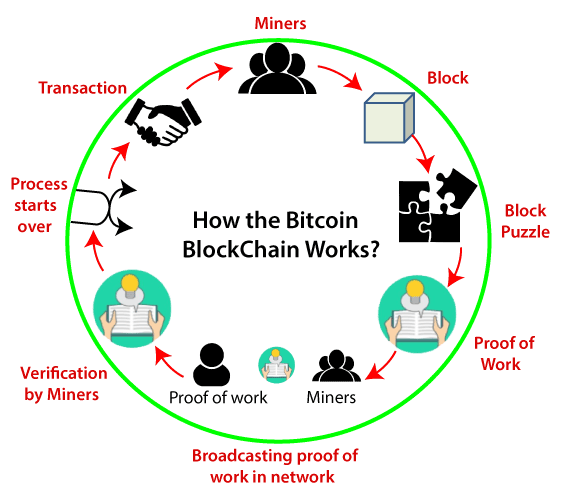How Bitcoin Works: The Simple Scoop
Alright, imagine money that ain’t controlled by banks, governments, or any suit in a fancy office. That’s Bitcoin. It’s digital cash, run by regular folks like you and me. Here’s the lowdown:

1. The Big Idea: No Boss in Charge
Bitcoin is decentralized. That’s a fancy word for “nobody owns it.” Instead of a bank tracking your money, thousands of computers worldwide (called “nodes”) keep copies of a shared digital ledger—the blockchain. Think of it like a Google Doc everyone can see but nobody can cheat.
👉 Why it’s cool:
- No bank fees or delays.
- No government can freeze your cash.
- It’s borderless—send $5 or $5 million to Peru in minutes.
2. The Blockchain: Bitcoin’s Digital Ledger
Picture a public library book where every page is a list of transactions. When you send Bitcoin, your transaction gets scribbled on a fresh page (a “block”). Once that page is full? It gets chained to the previous page. Hence: block + chain.
- 🔒 It’s unhackable: Changing one page would mean rewriting EVERY page after it—on thousands of computers at once. Impossible.
- 👀 Transparent: Anyone can see every transaction ever made (but your name isn’t attached—just your wallet’s “address,” like an email).
3. Mining: How New Bitcoins Are Born
This is where folks get confused. Mining ain’t digging for gold—it’s running software to keep Bitcoin secure. Here’s the deal:
- Miners use powerful computers to solve crazy-hard math puzzles.
- First miner to solve it shouts, “I verified these transactions!” and adds a new block to the blockchain.
- Reward: That miner gets brand-new Bitcoins (plus small fees from transactions).
⚠️ Key twist: There will only ever be 21 million Bitcoins. Period. (Over 19.5 million are already mined!)
4. Your Bitcoin Wallet: Keys, Not Coins
ou don’t “hold” Bitcoin like a dollar bill. You own digital keys that prove you control it.
- 🔑 Private key: A secret password (never share it!). Lose it? Your Bitcoin is GONE forever.
- 📬 Public key: Your wallet’s “address” (like a PO box). Share this to get paid.
“So my Bitcoin’s on the blockchain?”
Yep! Your wallet just holds the keys to move it.
5. Sending Bitcoin: Like Email, But for Money
Let’s say you wanna send me 0.1 BTC:
- You enter my wallet address (public key) and hit SEND.
- Your transaction joins a pool of pending deals.
- Miners grab it, verify you actually have 0.1 BTC (no funny business!), and cram it into a new block.
- Once confirmed (takes ~10 minutes), I get it. Done!
✅ No middlemen. No borders. No “processing fees” from PayPal.
6. Why Miners Bother: Incentives Rule!
Miners spend $$$ on electricity and computers. Why play?
- 🎁 Block reward: They earn new Bitcoin (cut in half every 4 years—”the halving”).
- 💸 Transaction fees: You tip miners to prioritize your transfer.
This keeps Bitcoin honest. Cheating costs more than playing fair.
7. Real Talk: The Rough Edges
Bitcoin ain’t perfect:
- ⚡ Slow: Handles ~7 transactions/second (Visa: 24,000).
- 💰 Fees spike: When busy, sending $10 could cost $5 in fees.
- ⚡ Energy use: Mining gulps power (though 50%+ is green energy now).
- 📉 Volatility: Price swings like a pendulum. Not great for buying pizza.
Why This Matters More Than You Think
Bitcoin isn’t just “internet money.” It’s a rebellion:
- 💪 Financial freedom: Be your own bank.
- 🛡️ Censorship-resistant: Dictators can’t seize it.
- 🌍 Hope for the unbanked: 1.4 billion adults can’t open bank accounts. Bitcoin? All you need is a cheap phone.
“We’re fixin’ money the same way the internet fixed information.”
— Some Bitcoin nerd (probably)
Bottom Line
Bitcoin runs on a global web of volunteers, math, and incentives—no CEO, no Fed, no borders. It turns trust from “I believe in banks” to “I believe in code.” Is it messy? Wild? Chaotic? You bet. But for millions, it’s the first shot at true economic power.